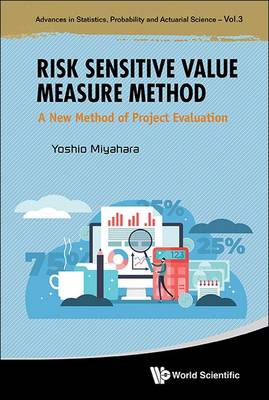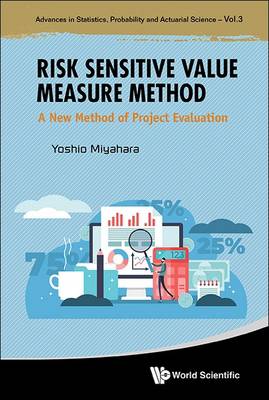
Je cadeautjes zeker op tijd in huis hebben voor de feestdagen? Kom langs in onze winkels en vind het perfecte geschenk!
- Afhalen na 1 uur in een winkel met voorraad
- Gratis thuislevering in België vanaf € 30
- Ruim aanbod met 7 miljoen producten
Je cadeautjes zeker op tijd in huis hebben voor de feestdagen? Kom langs in onze winkels en vind het perfecte geschenk!
- Afhalen na 1 uur in een winkel met voorraad
- Gratis thuislevering in België vanaf € 30
- Ruim aanbod met 7 miljoen producten
Zoeken
Risk Sensitive Value Measure Method: A New Method of Project Evaluation
Yoshio Miyahara
Hardcover | Engels
€ 134,45
+ 268 punten
Omschrijving
What is the most effective method for project evaluation? While the standard Net Present Value (NPV) method is widely used for its simplicity, it has notable limitations: it insufficiently accounts for the random complexity of cash flows and fails to capture the flexibility inherent in project execution.This book introduces an innovative evaluation method designed to address these shortcomings. It begins by analyzing the evaluation of random variables, representing the Random Present Values (RPVs) of cash flows, and identifies the optimal evaluation functional for RPVs. Through this analysis, the concave monetary value measure -- or concave monetary utility function -- emerges as the most suitable tool.The study is then extended to dynamic value measures, leading to the conclusion that the risk-sensitive value measure is the most robust approach for project evaluation. Practical applications of this method are thoroughly explored, offering valuable insights for tackling real-world project evaluation challenges.
Specificaties
Betrokkenen
- Auteur(s):
- Uitgeverij:
Inhoud
- Aantal bladzijden:
- 284
- Taal:
- Engels
Eigenschappen
- Productcode (EAN):
- 9789819808557
- Verschijningsdatum:
- 1/08/2025
- Uitvoering:
- Hardcover
- Formaat:
- Genaaid
- Afmetingen:
- 152 mm x 229 mm
- Gewicht:
- 548 g

Alleen bij Standaard Boekhandel
+ 268 punten op je klantenkaart van Standaard Boekhandel
Beoordelingen
We publiceren alleen reviews die voldoen aan de voorwaarden voor reviews. Bekijk onze voorwaarden voor reviews.









